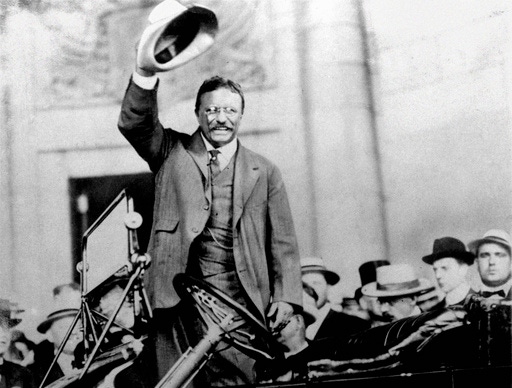Why vice presidential picks matter: significant moments in history and transfers of power

Republican vice presidential candidate Sen. JD Vance, R-Ohio, attends the first day of the Republican National Convention, Monday, July 15, 2024, in Milwaukee. (AP Photo/Evan Vucci)[ASSOCIATED PRESS/Evan Vucci]
WASHINGTON (AP) — Of the 49 vice presidents in U.S. history, nine of them — or nearly 1 in 5 — have risen to the presidency due to death or resignation.
The first was John Tyler, who became president after William Henry Harrison died one month into his term. The most recent was Gerald Ford, who took office upon Richard Nixon’s resignation.
Now in 2024, the spotlight is growing on the two parties’ vice-presidential picks — Vice President Kamala Harris, a Democrat, and Republican Sen. JD Vance of Ohio — due to the advanced ages of the two presidential candidates as well as an assassination attempt on GOP nominee Donald Trump on Saturday. The vice presidents who ascended to the top job have been behind some significant moments in U.S. history, including Reconstruction, the dropping of atomic bombs to end World War II, and the signing of the Civil Rights Act.
“For most vice presidents, succession is something that you have to think about and plan for, but it doesn’t happen,” said Joel Goldstein, a historian and expert on the vice presidency. “But when it happens, you’ve got to be ready.”
The four vice presidents during the 19th century who ascended to the top job were never elected to a presidential term in their own right, while in the 20th century, four of the five vice presidents who ascended would go on to win the White House as incumbents. Goldstein said early on, party leaders chose running mates and produced tickets that represented opposite wings of a party, or even different parties. That would change in the 20th century, when vice presidential picks had much more impressive resumes and political profiles of their own.
Here are the 9 vice presidents who unexpectedly became president — and their moments of power.
John Tyler
Tyler’s presidency is largely forgettable, but his path to the job had a major effect on American government. He became president when William Henry Harrison died of pneumonia a month after his inauguration in 1941. There was a brief debate over what the Constitution said should happen next. Was the vice president supposed to serve as acting president or as the actual president? Tyler believed the latter, and he took the oath of office, setting an important precedent. He was never elected to a full term, and he later supported the Confederacy in the Civil War.
Millard Fillmore
Fillmore was another accidental president, ascending to the job after Zachary Taylor became ill and died in 1850. Fillmore’s attempts to mediate disagreements over slavery led to the Compromise of 1850, which allowed California to join the union as a free state but also expanded efforts to recapture escaped slaves. Fillmore was never elected to a full term.
Andrew Johnson
Abraham Lincoln was fatally shot at the Ford Theater in 1865 near the end of the Civil War, making Johnson the first of four vice presidents to ascend to the presidency after an assassination. Johnson oversaw Reconstruction, which was the reunification of the Confederate states into the Union. The process is widely viewed as falling short by failing to achieve equal rights for freed slaves. Johnson became the first president to be impeached during a controversy over removing the secretary of war. Although he wasn’t removed from office, his bid for a full term failed.
Chester Arthur
Arthur took office after the assassination of James Garfield in 1881. One of his legacies is the civil service system, which shielded some federal government positions from being used for political patronage. He also signed legislation banning the immigration of people from China. Arthur was not nominated for a full term of his own.
Theodore Roosevelt
Roosevelt became the youngest person to serve as president at 42 years old when William McKinley was shot and killed in 1901. Roosevelt became known as one of the country’s most impactful and energetic presidents, pushing forward construction of the Panama Canal and expanding protection of national forests. He won a full term in 1904 and later tried unsuccessfully to win another term in 1912 by creating his own political party.
Calvin Coolidge
Coolidge became president after Warren Harding died of a heart attack in 1923. He became known for his circumspect leadership, limiting government intrusion into the economy during years of growth. Coolidge was reelected in 1924 but chose not to run for another term in 1928.
Harry Truman
Harry Truman had been vice president for only a few months when Franklin Delano Roosevelt died in 1945. He soon learned a grave secret — the U.S. government had developed atomic weapons. Truman oversaw the dropping of two bombs on Japan and the end of World War II. He narrowly won reelection in 1948 but dropped out of the race in 1952 when he was on track to lose the Democratic primary.
Lyndon Johnson
Johnson became president after John F. Kennedy was assassinated while riding in a motorcade through Dallas in 1963. He finished Kennedy’s term and won the election in 1964. Johnson enacted sweeping legislation to expand civil rights and social services, but he became increasingly unpopular because of the Vietnam War. Johnson surprised the nation by deciding not to seek reelection in 1968.
Gerald Ford
Ford was appointed vice president by Richard Nixon in 1973 when his first vice president, Spiro Agnew, resigned after pleading guilty to tax evasion. The following year, Ford became president as Nixon stepped down when it appeared likely that Congress was going to impeach him and remove him from office over the Watergate scandal. In his first speech after taking the oath of office, Ford told Americans that “I am acutely aware that you have not elected me as your president by your ballots, and so I ask you to confirm me as your president with your prayers.” Ford is remembered for the controversial decision to pardon Nixon of any crimes he committed. Ford never had an opportunity to serve a full term, and he was defeated by Jimmy Carter in the 1976 election.
—-
Associated Press writer Seung Min Kim contributed to this report.
Copyright 2024 The Associated Press. All rights reserved. This material may not be published, broadcast, rewritten or redistributed without permission.
